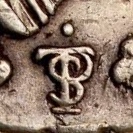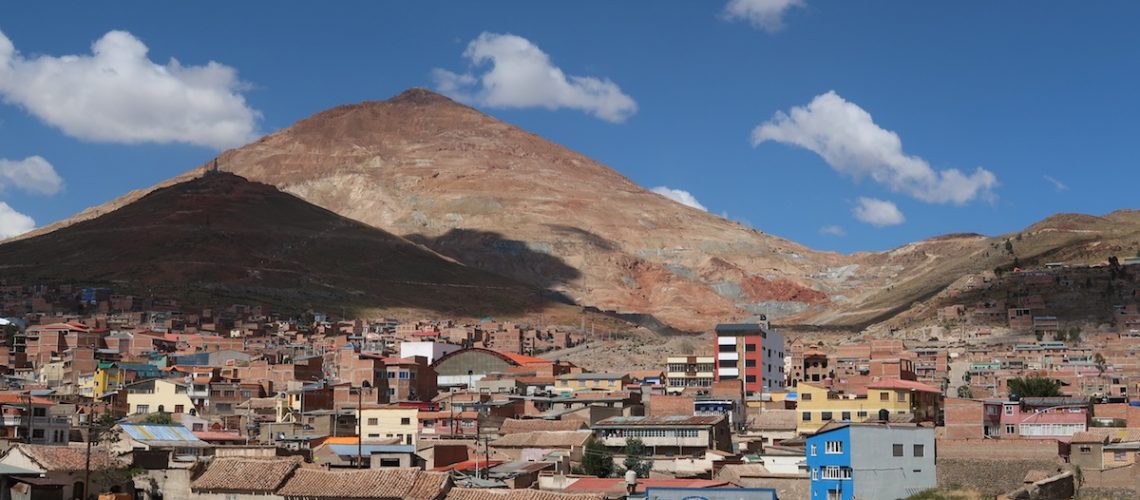In 1544, Diego Huallpa, a local Inca was out searching for an escaped llama when he stopped to build a fire in the shadow of a mountain. In Quechua the name of the mountain was ‘Potojsi’ (meaning ‘thunder’ or ‘explosion’). The fire he made grew so hot that it melted the earth beneath it. A shiny liquid started to ooze from the ground. Diego realised that he had discovered something that the Spanish conquerors desired above almost everything else.
That’s how the story goes. However silver was first discovered in the mountain, the Spanish soon learned of it and the city of Potosi was founded on 1st April 1545.
Thousands of indigenous slaves were put to work in the mines. It was deadly work though, and mortality through silicosis and accident was high. In order to boost production, slaves were brought over from Africa to supplement the workforce in their millions. The descendants of the few survivors still live in the Yungas.
The Spanish, mortgaged to the hilt, began to rely completely on the seemingly inexhaustible supply of silver from Potosí. This was shipped back to Spain annually in their treasure fleets. In fact, in years when ships were lost to the weather, or intercepted by pirates, it turned into a national disaster.
By 1572 the lust for more treasure led the Viceroy of Toledo to issue a decree to force all slaves over 18, no matter of their origin, to work shifts of 12 hours. They were also to remain underground, eating, sleeping and working, for four months at a time. Needless to say huge numbers of these miners never saw daylight again. Mortality was also high in the smelting mills as the process involved contact with mercury.
Also in that year a mint was founded in the city to coin the silver. In the mania eighty churches were built in the rapidly expanding city. It’s population rocketed to over 200,000 inhabitants becoming the biggest city in the Americas. It was also bigger than both London and Paris were at that time. Incredibly, it was one of the biggest cities in the world.
No one actually knows how much silver was extracted from the mountain, now known as Cerro Rico (Rich Mountain), over the four hundred years. Another myth says that there was enough silver for the Spanish to build a bridge from Potosí to Spain, and still have some left to carry across the bridge back to their homeland.
It is estimated that during colonial rule lasting three hundred years, that as many as eight million Africans and indigenous Bolivians died in sating the Spanish appetite for silver.
This couldn’t last. Declining output and looting during troubles in the early nineteenth century followed by falling silver prices in the middle of that same century saw the population dwindle to less than 10,000. Potosí never recovered.
Today the mines are still operational being run, in the main, by cooperatives of miners. Conditions have changed little since the colonial era. The average life expectancy of a miner in Potosí is still estimated as a meagre thirty seven years.
However, the colonial years have left behind an historical centre replete with splendid buildings and churches. We visited the town briefly on our journey through the Andes.
The city has the definite air of a working town when you arrive. Everything seems functional, with narrow one way streets snaking up and down the steep hillsides. This makes the pollution horrendous as the thick smoke and fumes from the old busses has nowhere to go. Our Hostal for our one night stay, the Hostal Tukos, is the oldest house and first Hostal in Potosí.
A walk around town takes you to two main squares. One typically has police buildings, town administrative buildings and the justice courts surrounding the central plaza. The other accommodating the impressive cathedral. In one corner of the square is the most important museum in Bolivia. The Casa Nacional de la Moneda, the national mint, an eighteenth century replacement for the original of 1572. In itself a fine building taking up a whole block, it houses a number of national treasures. Among them some important religious paintings from the Potosí school.
However, the most interesting part for me was the history of the mint. Both the old machinery used and the cultural legacy. There are connections between the minting of coin in Potosi and terminology that we still use today.
The original process was a man hitting a die with a hammer and creating an irregular shaped silver coin. This was replaced by machinery consisting of a massive set of wooden cogs, driven from the floor below by four donkeys driving a central driving shaft. At the top, four sets of ‘machines’ flatten the silver into consistent bars, stamp out the blanks for the coin and finally mint it. At the time, the currency used was called the ‘real’, and coins of different weights had different values. The largest coin was worth eight real, hence the phrase that we have for treasure, pieces of eight. As the minting process became more sophisticated, each mint would put its own logo on the coin. The moniker for Potosi is made up of the letters P, T, S and i. Put together they look like this put.

According to the Bolivians, this moniker evolved and simplified over time to become something very familiar right across the world. The dollar sign ‘$’. There are other theories about how that sign came about so I can’t vouch for it’s accuracy.
I hadn’t even heard of Potosi before going there. I certainly hadn’t anticipated how important it was historically and the legacy that it left for the world.
We were in the town the night before labour day, May 1st, a public holiday in Bolivia. You could hear bands practicing, and wandering through the town squares in the evening, the place felt quite chilled and relaxed. The squares were flood lit, and one of the town fountains was illuminated with a short lights and music show. On labour day itself we wandered through the town. Unfortunately we missed the processions and marching bands. The streets however were still filled with miners and people dressed in their Sunday finest all enjoying the sun and the celebrations.
Potosi is a lively and colourful place. This is despite its mining heritage and the brief life expectancy of the men who work in them. There is a tour that you can take into the mines. We decided not to go on this occasion. Those who did go however, confirmed that working conditions there are still poor and dangerous.
However, our stay in Potosi was short. Lunchtime saw us catch a minibus from the hostal, down through the narrow exhaust fume filled streets and past street barbecues to the old bus station. There we caught the bus to Uyuni for the start of our trip across the salt flats and desert.
